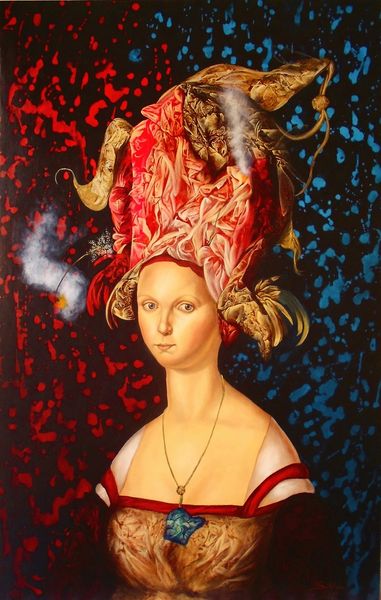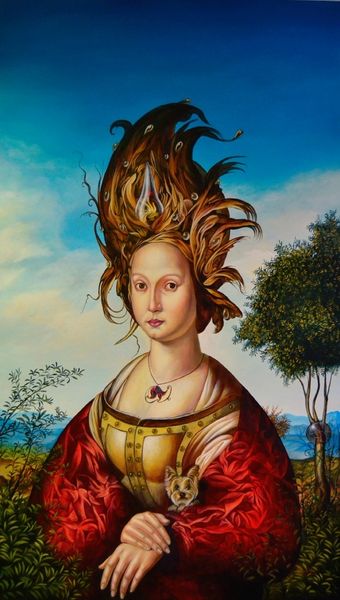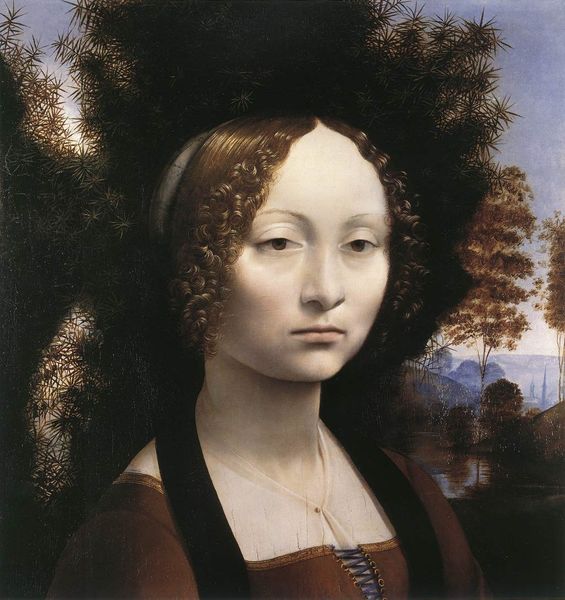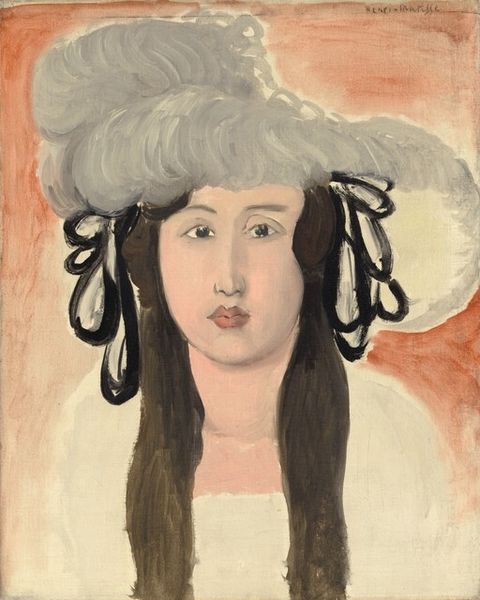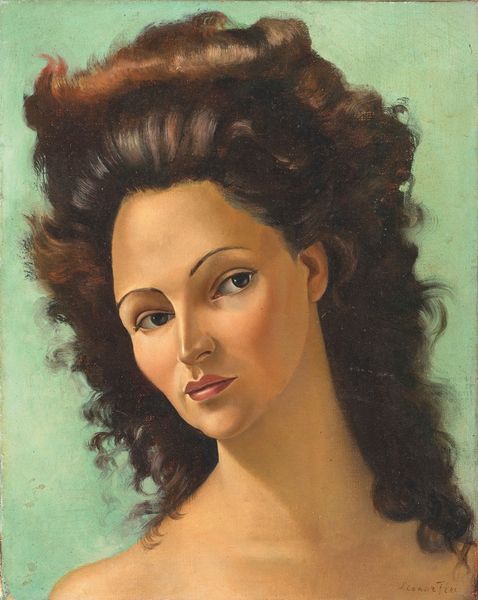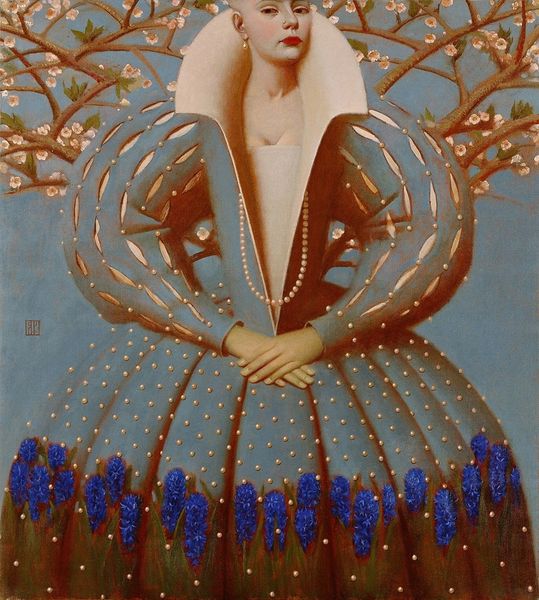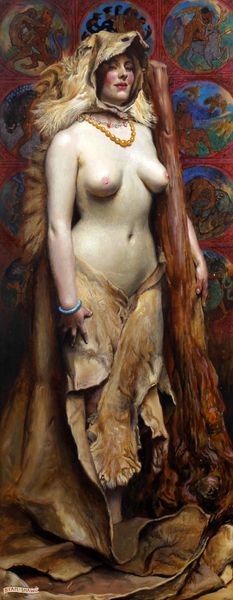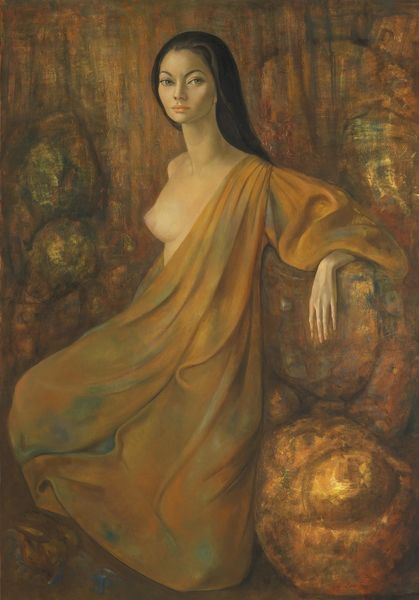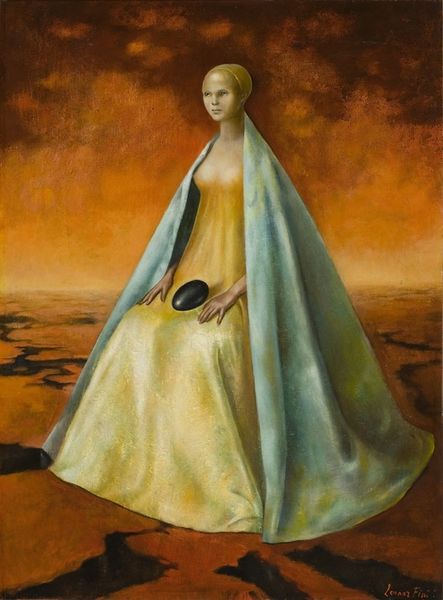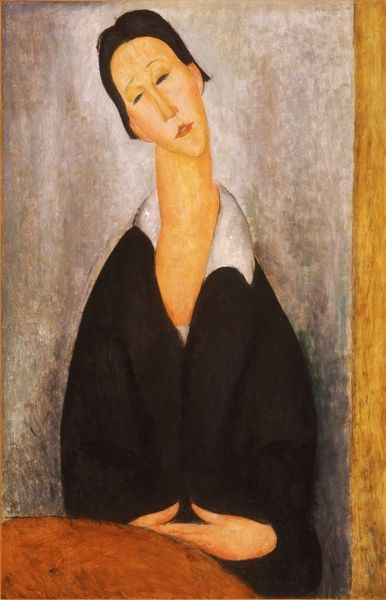
painting, oil-paint
#
portrait
#
painting
#
oil-paint
#
figuration
#
modernism
#
realism
Copyright: Tamara de Lempicka Estate LLC
Curator: This is Tamara de Lempicka's "Mexican Girl," painted in 1948. The piece exemplifies her characteristic blend of realism and modernist sensibilities. Editor: It strikes me immediately by its unsettling stillness. There's a quality in her eyes, almost a melancholy, which combined with the stark color palette lends a somber note to the piece. What do you make of the sitter's garb? Curator: Indeed, Lempicka has carefully constructed a series of formal contrasts in the composition. Notice the geometric planes that shape her face in dialogue with the textural, almost chaotic straw of the hat. And observe her calculated use of light; how it models the subject's face to generate a powerful, simplified form. Editor: Her garments, seemingly tattered, seem indicative of a certain economic reality, possibly an intended comment on Mexican social stratification in that era. The visible brushwork speaks of a certain rawness, and offers a contrasting counterpoint to the polished surface Lempicka favored in her Art Deco portraits. One begins to think of the socio-political dimensions embedded in this art object and what material hardships might it be suggesting. Curator: That's an interesting approach. What about the semiotic function of the color? The muted, earthy tones of the subject's clothes draw a clear contrast with the serene cerulean backdrop. That’s an emotive cue designed to direct our focus toward the woman's psychological interiority. Editor: I can't help but consider the material aspect; Lempicka uses oil paints here – a medium often linked with grand historical painting – and uses it to immortalize this figure. There's a suggestion of inherent nobility even in destitution through the act of creating a painting about her. It almost transcends conventional notions of portraiture. Curator: Well, thinking on it that way reveals an unseen interplay between Lempicka’s formalism and a powerful expression of human spirit. Editor: Absolutely. It encourages us to look not just at, but also beyond the canvas itself, considering both artifice and actuality as a process.
Comments
No comments
Be the first to comment and join the conversation on the ultimate creative platform.
